Everyone is used to perceiving ion engines as science fiction items. But they have been successfully operating in space for 50 years. So why haven’t they replaced chemical ones yet? The reason is their low power, which severely limits the field of application.
Limitations of chemical jet engines
All jet engines that run on liquid or solid chemical fuel have one significant drawback: the rate at which the jet mass flows out of them is limited to several hundred meters per second. And since the product of the spacecraft’s velocity change by its mass is always equal to the product of the outflow rate of gases by the mass of these gases, this leads to a situation where most of the spacecraft’s mass is fuel (and oxidizer), but still the available Δv or velocity change for the spacecraft remains extremely limited.
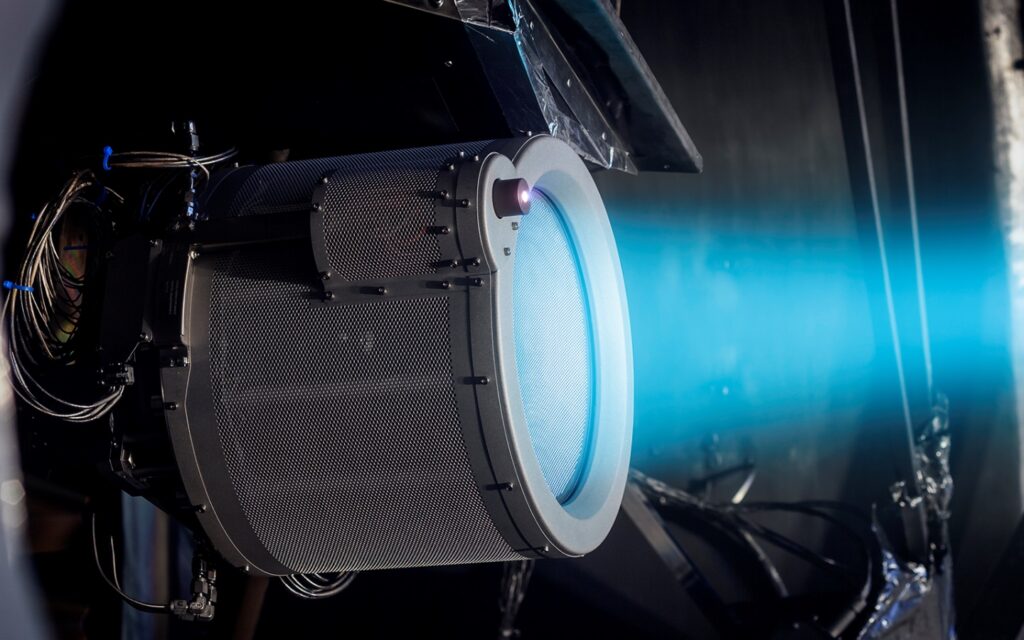
Today, the only way out of this situation is to abandon the chemical reaction as a source of reactive force and replace it with something else that would give a much higher rate of gas flow from the engine nozzle. A magnetic field can do this best. As for the question of what to accelerate and how, there are a number of seemingly very similar answers. The first and most well-developed of these is the ion engine.
How an ion engine works
The idea of an ion engine is quite simple. The chamber is fed by some kind of gas, usually inert (argon, xenon, krypton) to prevent its chemical reaction with the engine’s structures. Mercury was also used in some cases. Next, the gas is bombarded with high-energy electrons that interact with the electronic shells of the gas atoms and tear electrons away from them.
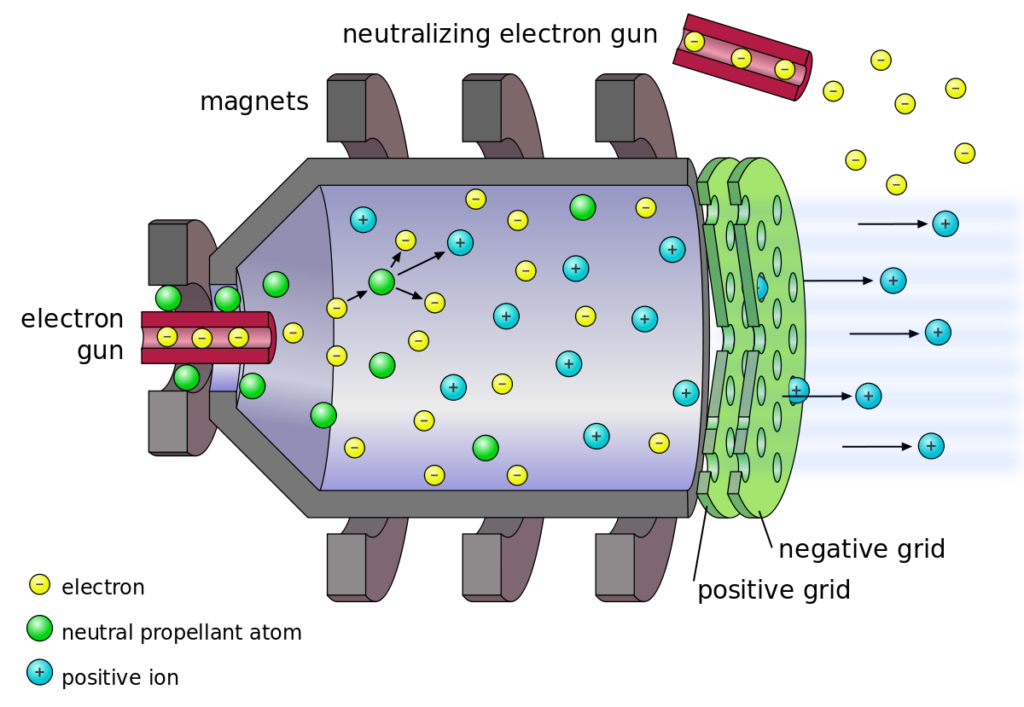
This results in a kind of mixture of free negatively charged electrons and positively charged ions. This process is called ionization, and the resulting gas (after removing excess electrons from it) is called ionized. And because the particles of this gas are charged, they can be accelerated by a magnetic field, usually an electrostatic field.
The first ion engine
The concept of an ionic jet engine appeared more than 100 years ago. In 1911, it was expressed by Konstantin Tsiolkovsky, and soon all the pioneers of rocketry were developing the design of this type of engine. However, this task was not so simple: the first ion engine was launched by NASA in 1959. It happened in a laboratory on Earth. In space, it was tested on the SERT-1 spacecraft, and it operated for 31 minutes and 16 seconds.
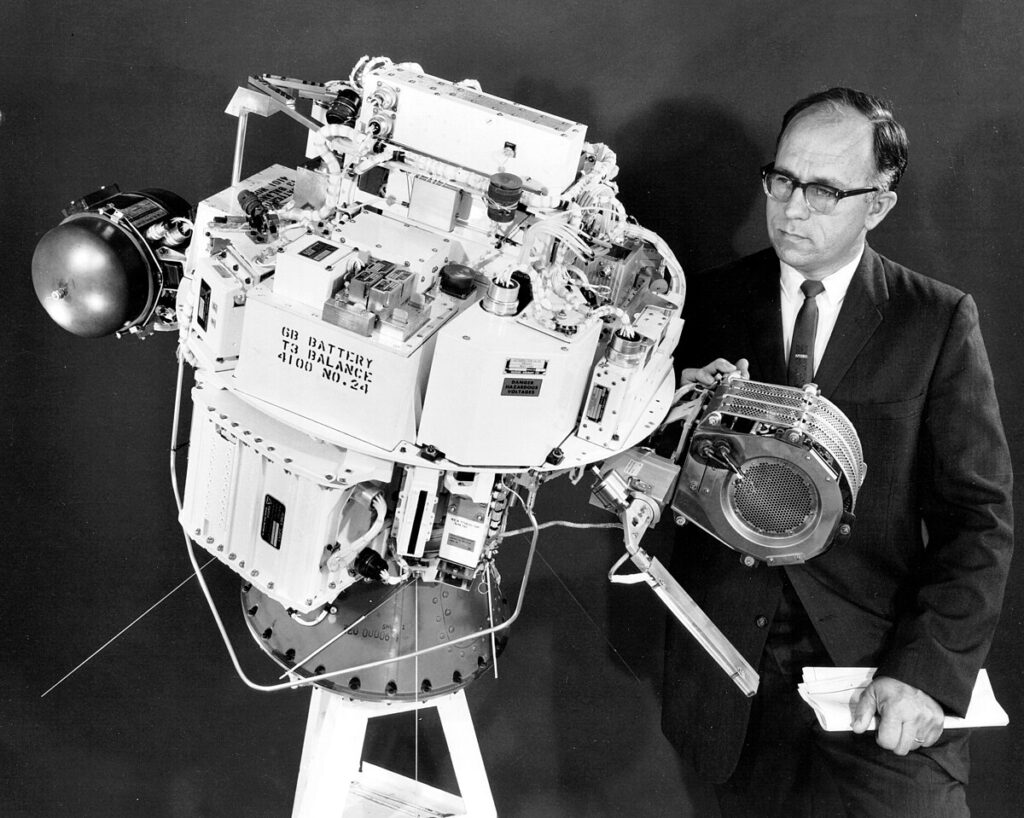
It may seem like a short time, but not for rocket engines, which usually burn huge amounts of fuel in a few minutes. The fact is that even in their earliest designs, the outflow rate of the working fluid in ion engines was more than 10 km/s, while for the best chemical engines it was 3-5 km/s. That is, the ion engine as early as the 1960s made it possible to use three times less jet mass compared to chemical engines.
That flight also confirmed the main drawback of all ion engines — the inability to achieve high power. This is greatly hampered by the limitation of the electric current in the gas environment, which does not allow ionizing large volumes of gas.
Ion engine based on the Hall effect
In response to NASA, the Soviet Union tested its Hall effect ion engine in space. It does not use bombardment of gas with high-energy electrons. Instead, the gas is placed in a ring-shaped chamber with a coil inside and magnets along the edges that act as a cathode. The gas source itself usually plays the role of anode. In such conditions, ionization occurs directly under the influence of a magnetic field and, accordingly, the volume of gas that can be ionized is much larger.
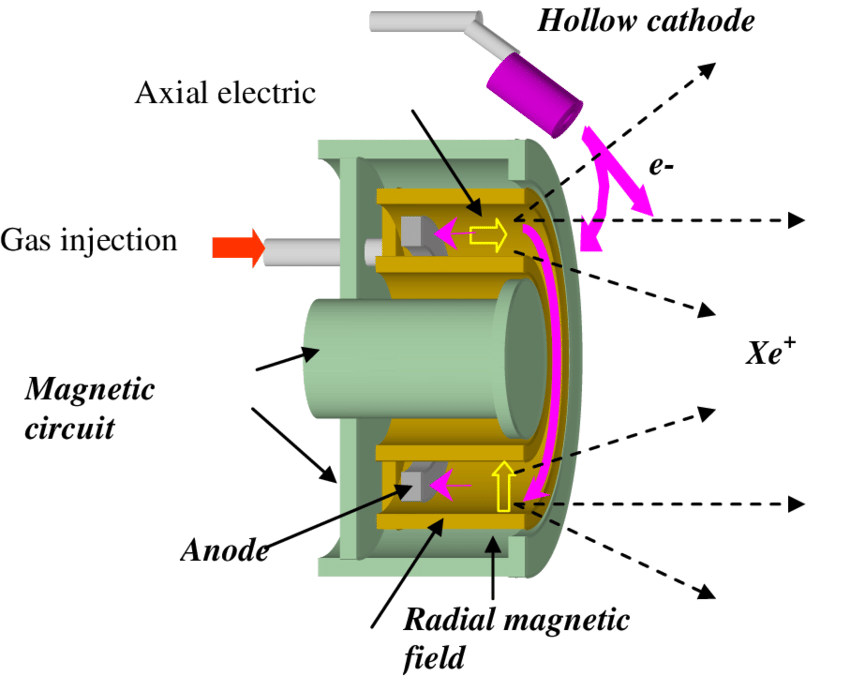
This means that, despite the slightly slower outflow rate of ionized gas, the Hall effect ion engine is significantly more powerful than traditional engines of this type. However, it is worth noting that this “significantly” is relative, because the most powerful Hall effect engines are capable of developing thrust of only 600 millinewtons at gas outflow rates of up to 50 km/s. This is enough power, for example, to keep a cell phone in the air.
Soviet ion engines
However, the Hall effect engine turned out to be much more efficient than a conventional ion engine. And while NASA launched an ion engine once again on the SERT-II satellite and lost interest in their use for many years, the Soviet Union found a use for low-power but extremely economical engines. This power was quite enough to rotate spacecraft around their axis.
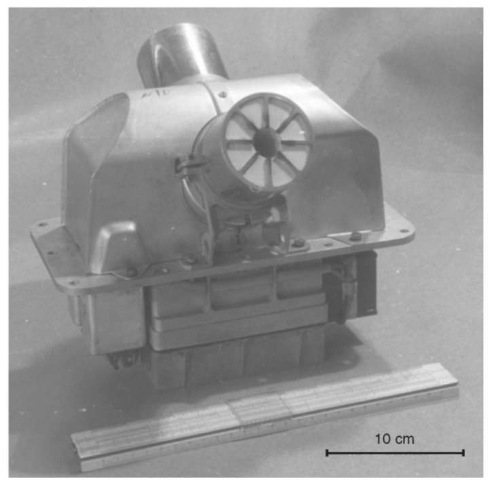
Thus, since 1972, the USSR has been mass-producing ionic orientation engines with thrusts of up to 200 millinewtons, which were installed on various satellites. In particular, they were used to power Meteor meteorological satellites, which were in operation for many years.
We should also mention the terminology. Often, ion engines are also called plasma engines. There are many misunderstandings associated with this. In particular, Hall effect engines are often referred to as stationary plasma engines. In general, this name is acceptable, but more often the term “plasma engines” is applied to other types that use electromagnetic fields to accelerate the reactive mass.
Using an ion engine as a main propulsion system
The interest of other countries in ion engines returned in the 1990s, when the development of electronics made it possible to make spacecraft and equipment on them quite light in weight, and the developments of Soviet scientists became available to engineers from other countries. It was during these years that the first attempt to use an ion engine as a propulsion system was made. The Deep Space-1 spacecraft was specially designed to test new technologies, in particular, the ion propulsion engine, whose maximum power in flight was 92 millinewtons.
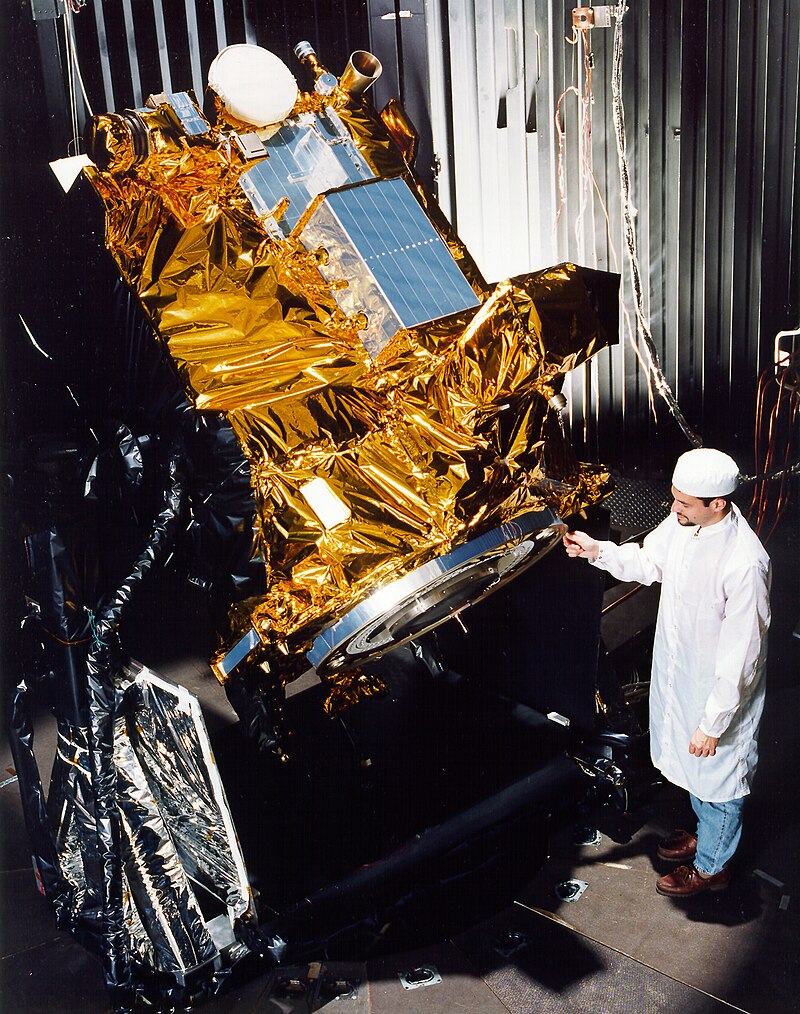
Despite its rather modest power, this engine allowed the Deep Space 1 automatic station to set a record for increasing its speed in space without the use of gravity maneuvers. To increase its speed by 4.3 km/s, the 370-kilogram spacecraft needed only 72 kilograms of xenon. The engine itself was of a completely traditional design, i.e., ionization was carried out using an electrostatic field.
In 2003, the European Space Agency launched the SMART-1 spacecraft designed to explore the Moon and test the first Hall-effect ion engine as a main propulsion engine, with a power of only 1380 watts (like a not very powerful drill). Nevertheless, it could develop a thrust of 70 mN and had a specific impulse of 16400 m/s, which is three times higher than the most efficient chemical engines. Thanks to this, SMART-1 needed only 82 kg of xenon to reach the Moon from Earth orbit and become its artificial satellite.
Hayabusa
But these missions were only the beginning of the modern use of ion engines, because in the same year, 2003, the Japanese Space Agency launched the Hayabusa automatic station, equipped with four ion thrusters. Despite the fact that the power of each of them was only 8 millinewtons, meaning that it could accelerate a 500-kilogram spacecraft by only a few millimeters per second, it could maintain this acceleration for months, which made it possible to realize the main advantage of an ion engine over chemical engines — a high margin of Δve with a rather modest size.
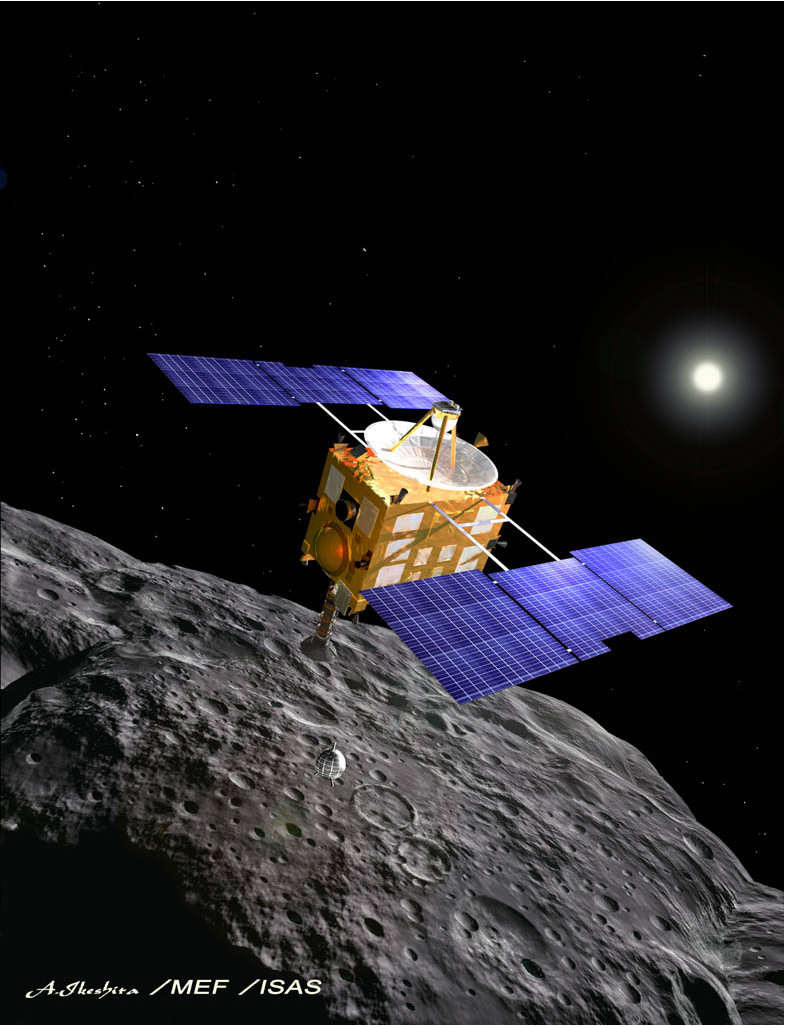
The low specific impulse of chemical engines is very acutely felt in that every maneuver of the spacecraft must be thought out from the very beginning. There is usually no fuel on board to change plans or correct mistakes. But Hayabusa had it. The fact is that due to numerous malfunctions, this mission was on the verge of failure several times. At one point, due to a program malfunction, communication with the vehicle was lost, resulting in damage to one of the propulsion engines. Later, the communication was restored and Hayabusa returned to Earth using the remaining engines. This confirmed another advantage of ion engines compared to chemical engines — their high reliability.
Dawn and modern missions
In 2007, the Dawn spacecraft was launched from the Earth, and today it holds the championship in gaining speed in space without using gravity maneuvers. It has as many as three engines, very similar to the one installed on Deep Space-1. Using them, the spacecraft managed to far surpass the record for speed gain, increasing its own speed by 11.1 km/s. It is worth noting that the Dawn mission was originally planned to take full advantage of the new engine. The share of xenon constituted 425 kg of 747 kg of the spacecraft’s weight.
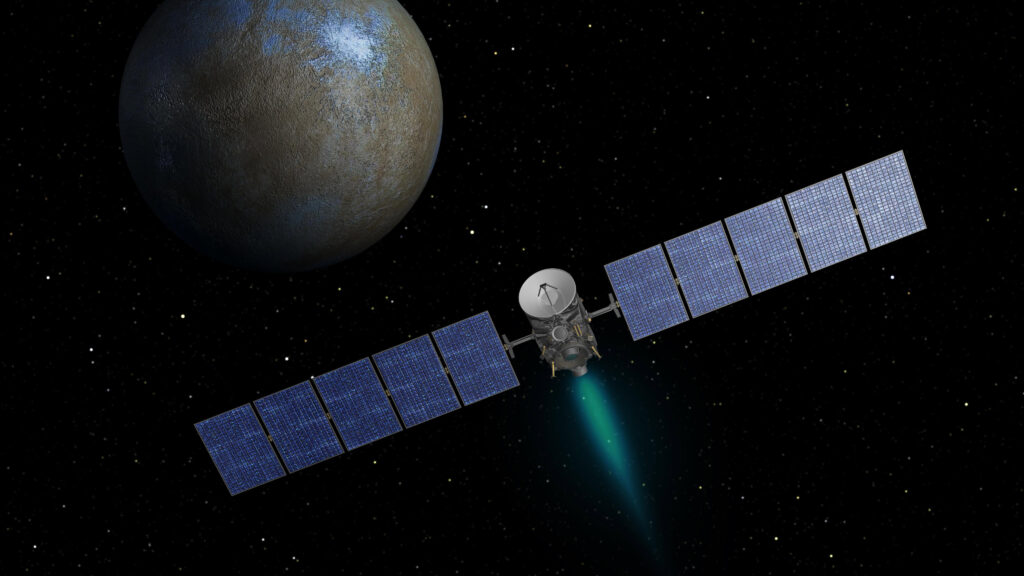
This was enough to fly from the Earth to the asteroid Vesta, work for a couple of years in its orbit, leave it and head to the dwarf planet Ceres, enter its orbit and explore this celestial body. Even after that, Dawn still had enough fuel left in its tanks to reach the third asteroid. However, these plans were not realized, and after 11 years, the mission was stopped, and the probe itself remained in Ceres’ orbit.
The success of the concept of using an ion engine as a propulsion system on automatic stations is evidenced by the fact that it is currently being used on three other missions. These are the BepiColombo automatic station designed to study Mercury, Hayabusa-2, which has already delivered samples from the asteroid Ryugu to Earth and is currently performing an additional mission designed for another 10 years of flight, and the European communications satellite Artemis. The latter should be mentioned separately, as its operational history began in 2001 with the accident of the third stage of the launch vehicle, which resulted in its failure to reach the desired orbit. Usually, this ends with a satellite falling into the atmosphere, but Artemis had ion engines. Thanks to this, it slowly managed to reach the desired orbit, becoming perhaps the first spacecraft in history to survive a launch failure.
What are the advantages of ion engines?
In general, it can be noted that ion engines are no longer fiction or experimental development. Over the past couple of decades, they have proven to be reliable and very cost-effective equipment. They cannot yet completely replace chemical engines, even in theory. In principle, an ion engine is not suitable for launching from the Earth’s surface. Nor will it be used as a propulsion system for manned missions in the near future. The highest thrust that ion engines have been able to develop to date is 290 mN on the BepiColombo spacecraft. There is no point in talking about any acceleration for a spacecraft significantly heavier than one ton.
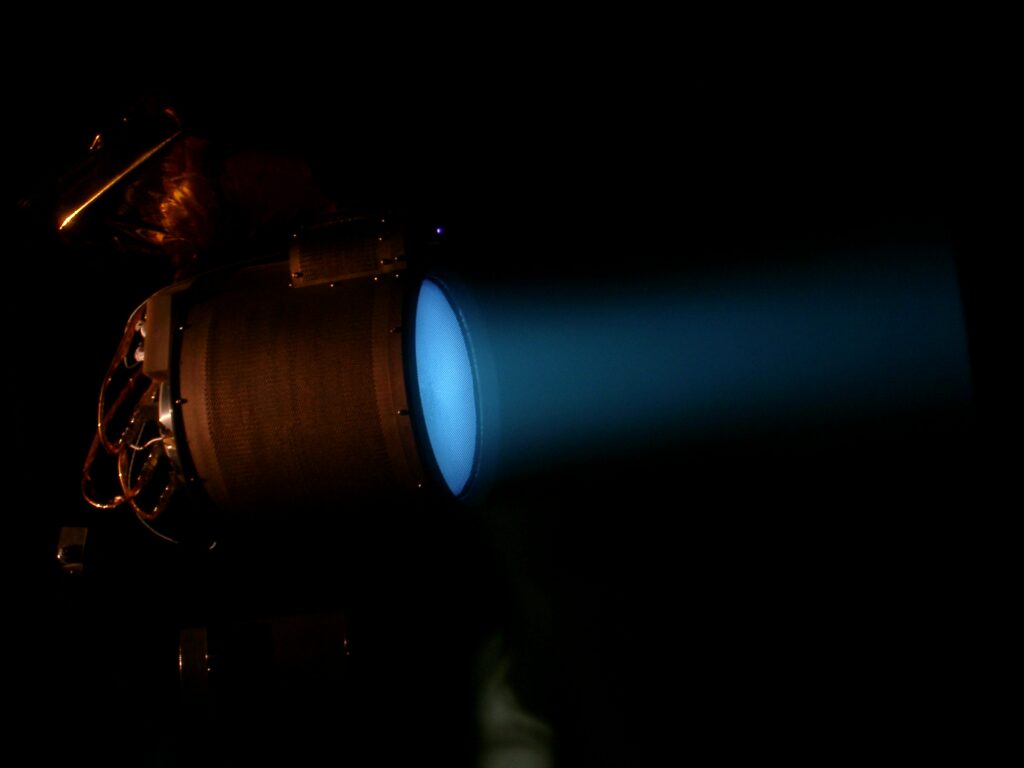
It is possible that the limitations of ion engines on thrust will never be overcome. But they have already revolutionized space exploration. First of all, this applies to satellites, which can now serve for decades, actively maneuvering between orbits. The most ambitious project of our time, the Starlink satellites, uses ion engines based on the Hall effect.
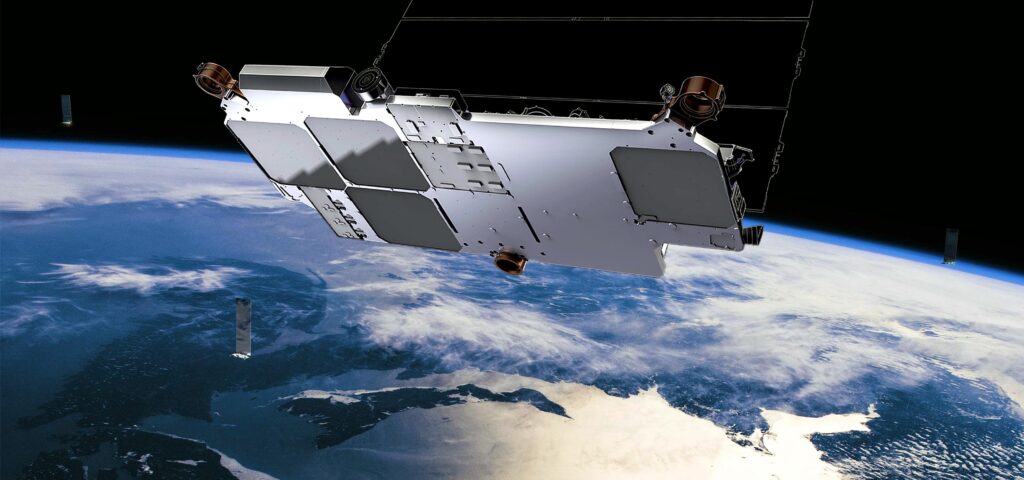
In addition, ion engines have undoubtedly become a real breakthrough in the technology of small automatic stations designed to explore other planets. For the first time, it has become possible to explore space bodies for years by actively moving between them. And while it used to be the norm to launch a probe and wait for years for a few hours of active work, now the productivity of missions has increased significantly.
Prospects
It is still unclear which of the two main schemes — with a static magnetic field or based on the Hall effect — is more promising, because both are currently used on spacecraft. It seems that the Hall effect engine is more suitable for near-Earth satellites, because they require quite dynamic maneuvers and more power. But for interplanetary stations, the traditional ion engine scheme clearly prevails, because it is important to get the maximum specific impulse from each kilogram of xenon.
And even if the thrust of both types of ion engines cannot be significantly increased, they clearly confirm that the use of an electromagnetic field to generate thrust deserves further development. Perhaps one of the newly developed types of electromagnetic engines will be the best option for future manned spacecraft.
